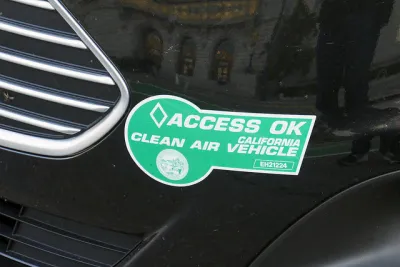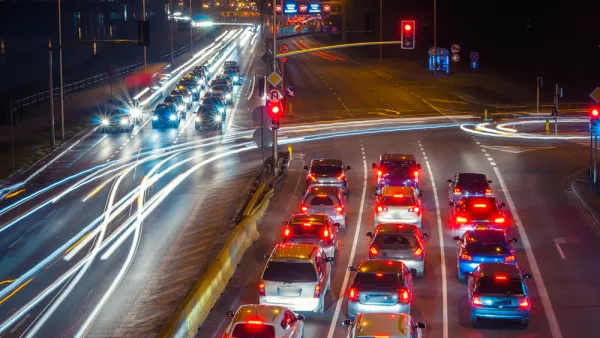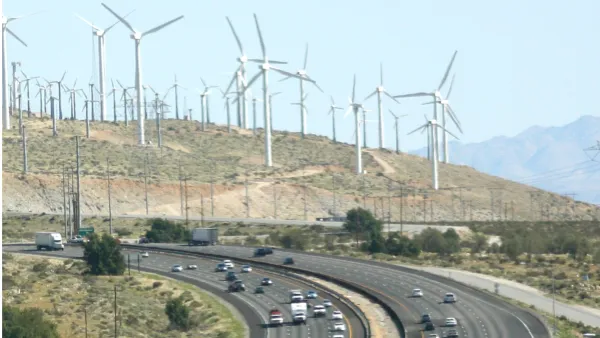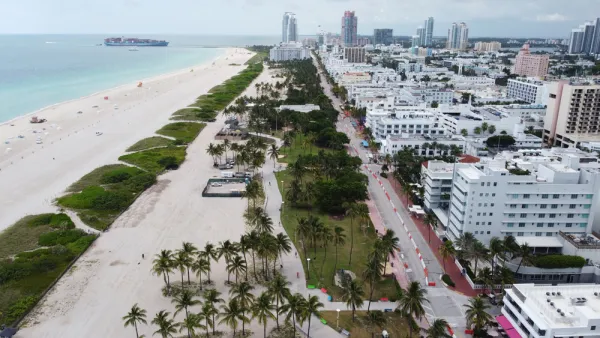Driving in the United States accounted for five percent of global carbon emissions before the pandemic, but U.S. cars and trucks account for 20 percent of the global emission reductions during the pandemic.

Charles Komanoff reports: "U.S. cars and trucks, the source of 5 percent of world carbon emissions, have accounted for a whopping 20 percent of this year’s global dip in carbon pollution, according to comprehensive emissions data compiled by Carbon Monitor and recalculated by me for the Carbon Tax Center."
To put those percentages in terms of raw numbers:
During the first three quarters of 2020, a period that roughly coincides with lockdowns and other restrictions from the COVID-19 pandemic, the world’s emissions of carbon dioxide from burning fossil fuels fell by more than 1.6 billion metric tons from the same period in 2019, a decline of 6.3 percent. Fully one-fifth of the decline, 320 million tons, was due to the nearly 25 percent drop in U.S. ground transport emissions. (A metric ton, roughly 1.1 short tons, is the standard metric for carbon emissions.)
Globally, half of the decline was traceable to reduced ground transportation, even though pre-pandemic, car and truck traffic only accounted for 19 percent of the total carbon emissions.
Hat tip to Streetsblog USA for sharing the article.
Previous Planetizen coverage of pandemic climate emission reductions:
- Greenhouse Gas Emissions Reduced 17% Worldwide in April, Study Says (April 2020)
- The Cost of COVID Carbon Reduction: $3,200-$5,400 a Ton (August 2020)
As mentioned by Komanoff, the reductions are hard to celebrate when so many have suffered and died in the process.
FULL STORY: Downturn in U.S. driving led 2020 global CO2 decline

National Parks Layoffs Will Cause Communities to Lose Billions
Thousands of essential park workers were laid off this week, just before the busy spring break season.

Retro-silient?: America’s First “Eco-burb,” The Woodlands Turns 50
A master-planned community north of Houston offers lessons on green infrastructure and resilient design, but falls short of its founder’s lofty affordability and walkability goals.

Delivering for America Plan Will Downgrade Mail Service in at Least 49.5 Percent of Zip Codes
Republican and Democrat lawmakers criticize the plan for its disproportionate negative impact on rural communities.

Test News Post 1
This is a summary

Test News Headline 46
Test for the image on the front page.

Balancing Bombs and Butterflies: How the National Guard Protects a Rare Species
The National Guard at Fort Indiantown Gap uses GIS technology and land management strategies to balance military training with conservation efforts, ensuring the survival of the rare eastern regal fritillary butterfly.
Urban Design for Planners 1: Software Tools
This six-course series explores essential urban design concepts using open source software and equips planners with the tools they need to participate fully in the urban design process.
Planning for Universal Design
Learn the tools for implementing Universal Design in planning regulations.
EMC Planning Group, Inc.
Planetizen
Planetizen
Mpact (formerly Rail~Volution)
Great Falls Development Authority, Inc.
HUDs Office of Policy Development and Research
NYU Wagner Graduate School of Public Service





























